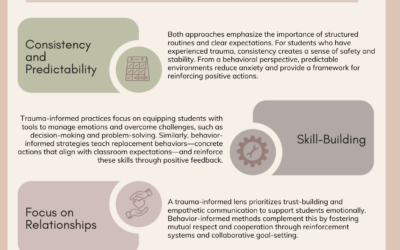In last week’s blog, I talked about the 3 things that don’t help with student behavior and one of those things is punishment. I know that when you use punishment it can feel like you are stopping those challenging behaviors but the reality is that you are only putting a temporary fix on a long-term problem. Punishment does stop the behavior in the short term but the problem with punishment is it doesn’t create any long-term behavior change so before you know it, you are right back where you started (or even worse than you were before). Here are 10 quick fixes to use instead of punishment!
1. Ask for help BEFORE the behavior puts you over the edge
We so often wait until we feel we can’t handle another thing before asking for help. We do this around student behavior too. When things are in crisis, it is very hard to turn them around. Making changes early makes all of the difference! Asking for help doesn’t make you a bad teacher, just the opposite! Strong teachers ask for help.
2. Take a step back and make sure your expectations are VERY clear and if not, re-teach and practice
One mistake we all make as teachers is assuming that students “just know” what to do or what we are expecting. Just because it is obvious to us doesn’t mean it is obvious to a student. Just because most kids know what to do, don’t assume that all students do.
3. Reinforce other students displaying the specific behavior you want to see
One of the most powerful tools we have is reinforcement and a wonderful way to use it when dealing with challenging behavior is to reinforce other students that are doing what you asked. Instead of punishing the student with challenging behaviors, reinforce someone else!
4. Look at your classroom schedule and make sure it works for each student in your class
Sometimes changing your classroom schedule is all that is needed to turn challenging behavior around. Do you have the kids sitting too long? Do you move more challenging material to a different time of the day? Many behavior issues can be helped by just changing what the school day looks like!
5. Look at your rules and procedures to make sure they are clear and have been taught at length
Rules and procedures are so critical when running a well-managed classroom but so often they are overlooked! Remember: they need to be specific, clear, taught, and practiced just as much as reading or writing!
6. Take a second look at your management program in your classroom. Is it effective for ALL students in your class?
My most important tip is this: if your management system doesn’t work for your most challenging student, then it doesn’t work. We often set up our behavior systems based on the “average” student or the “easy” student. This is a common mistake. Those students will respond well to most systems and are not the challenge. If your system works for that one really challenging student then it will easily work for all the other students in your class.
7. Take a break
This may seem too simple compared to the other quick fixes to use instead of punishment but I promise you, it can really turn things around. Dealing with challenging behavior can be exhausting and can lead to us making poor choices and sometimes even making the behavior worse. Sometimes the very best thing you can do is take a break to recharge. The simple answer is often the best answer!
8. Beware of what your body language and mood are saying to the student
Students can bring out the worst in us and that doesn’t make you a bad person. It makes you human. Dealing with a student who has challenging behaviors can bring out all kinds of thoughts and feelings in us. Just make sure to check that your body language is not sending the wrong message to the student.
9. Make sure your corrective feedback and positives are balanced through the day
It can be very easy to get caught in what I call the “corrective feedback black hole.” This is where the more challenging a student’s behavior is, the more imbalance the positives and negatives become and this in-turn only fuels the challenging behavior. Make sure that you find ways to give positives to even your most challenging students, even when it seems like the positives are few and far between. Find those moments and let the student know you see the good with the bad.
10. Breathe…
Sometimes the best quick fixes to use instead of punishment include taking a few deep breaths and letting our body/emotions relax. So often when dealing with challenging behavior we hold our breath without even knowing it and a few deep breaths can make all the difference!
If you are looking for more support with challenging behavior…
-
Download the behavior buster
-
Jump on the waitlist for Bite-Size Behavior Course
-
Or check out more resources





